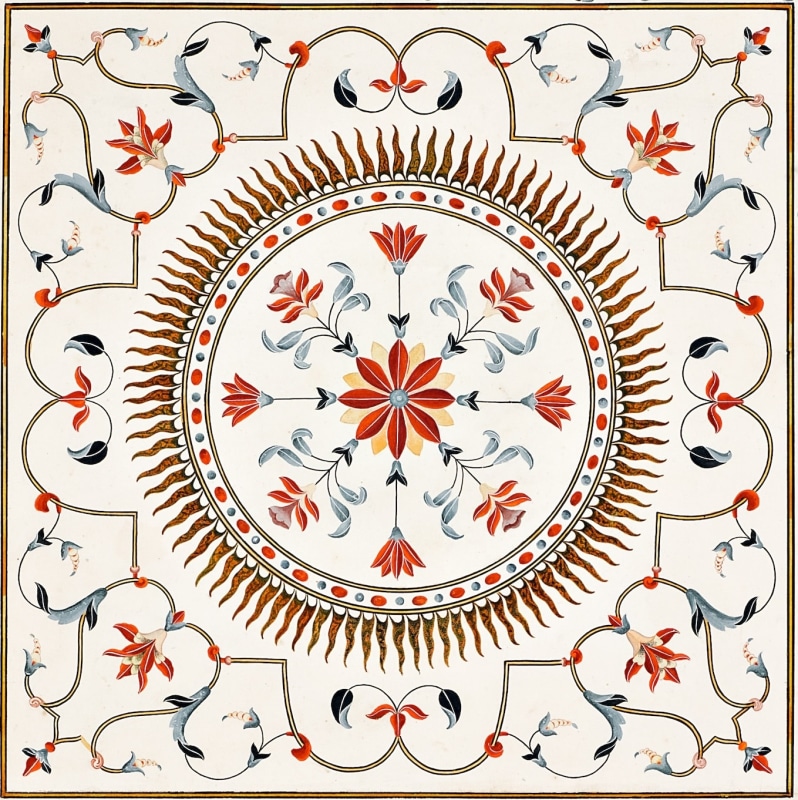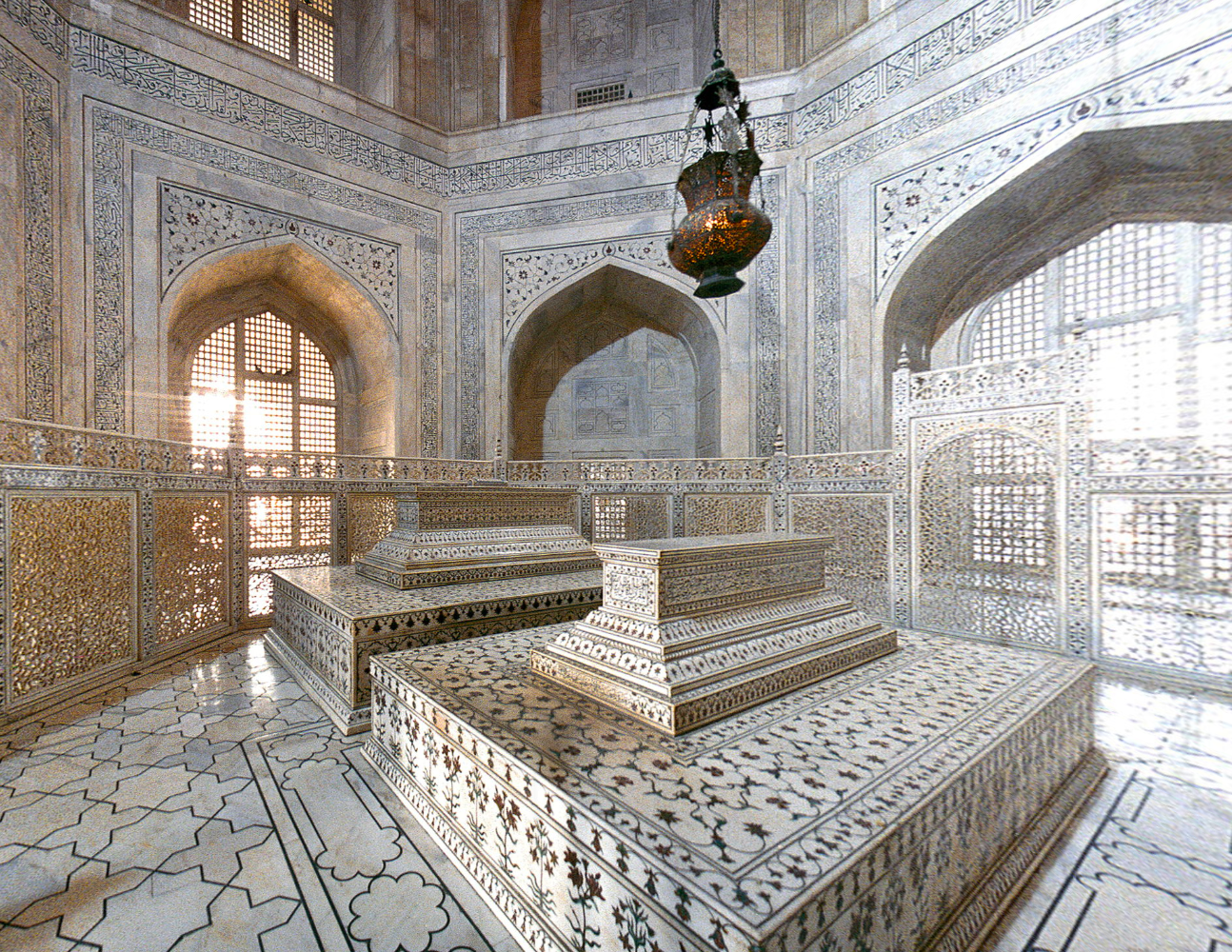
Provenance:
Private Collection, Scotland
Simon Ray, Islamic and Indian Works of Art, London, 2012, no. 82
This full-sized watercolor depicts the pietra dura inlay on the top of Shah Jahan’s cenotaph at the Taj Mahal. The designs and quality of the pietra dura work on the cenotaphs of Shah Jahan and Mumtaz Mahal are among the most beautiful of all imperial Mughal decorative schemes, unsurpassed in the skill of the execution and of utmost delicacy and refinement in the drawing. Indeed, the foremost architectural historian of India, Percy Brown, has stated: “So sensitive and yet so firm is the drawing that it resembles the spirited sweep of a brush rather than the slow laborious cutting of a chisel.”
The designs on Shah Jahan’s cenotaph are a testament to his obsession with fine craftsmanship. The floral sprays are tightly drawn with a crisp movement, and the flaming halo or sunburst (shamsa) at the head panel of the cenotaph seems to spin with extraordinary delicacy. The splendid sunburst alludes to the solar symbolism that played an important role in the imperial ideology of Shah Jahan--he was a sun king in the Persian as well as the Indian tradition, and a sunburst decorates the apex of the dome within the tomb chamber. Within the sunburst is an eight-petaled flower from which radiate eight floral sprays composed of two alternating flower types. Surrounding the sunburst are floral arabesques that take lyre forms in each of the spandrels.
At the foot of the cenotaph is a graceful composite plant with delicate red flowers and buds rising from a cluster of twisting leaves. This is framed by interlocking scrollwork enriched with miniature flowers and bunches of grapes, an imperial motif which also appears in the baldachin of the throne of Shah Jahan in the Red Fort at Delhi.
Drawings of the tops and side elevations of the cenotaphs of Shah Jahan and Mumtaz Mahal, along with views of the Taj Mahal, would often be included in early nineteenth century architectural albums of Mughal monuments produced by Agra draughtsmen for British patrons, and studies of Mughal pietra dura decoration were much admired by the British.


